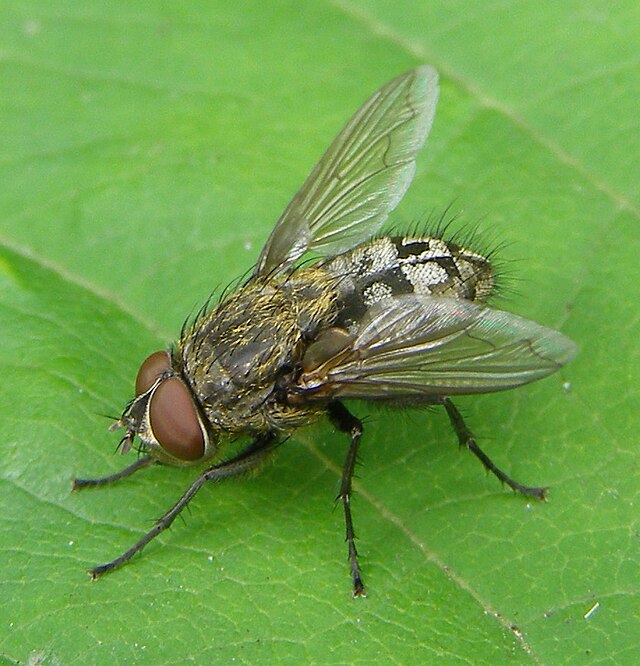All About Cluster Flies
Cluster flies (Pollenia rudis) are a common nuisance pest that appears in homes during autumn. They seek out warm, protected areas to overwinter and can be found inside homes throughout the winter months. Although they are not damaging to structures, they can be a significant annoyance.
What are Cluster Flies?
Cluster flies, scientifically known as Pollenia rudis, are larger than house flies and are characterized by their dull-gray color with black markings and golden-yellow hairs on their thorax.
Native to Europe, cluster flies have become widespread in North America. They are parasitic on earthworms during their larval stage, feeding inside the worms before pupating in the soil.
How to Identify Cluster Flies
Appearance:
- Slightly larger than common house flies, about 8-10 mm in size.
- Dull-gray body with black markings.
- Golden-yellow hairs on the thorax, giving a golden sheen.
Similar Pests: They can be distinguished from other flies by their yellowish hairs and tendency to cluster on the sunny sides of buildings.
Activity and Seasonality
Active Seasons: Cluster flies are primarily active in the autumn when they seek overwintering sites and can be found inside homes during the winter. They become active on warm winter days.
Lifecycle: Cluster flies have up to four generations per season. Adults lay eggs on soil, which hatch into larvae that parasitize earthworms. The larvae pupate in the soil and emerge as adults in the spring.
Where to Find Cluster Flies in or Around Your House
Common Habitats: Cluster flies are often found in wall voids, attics, and other secluded areas within homes. They gather in large numbers on sunny sides of buildings and enter through cracks and gaps.
Specific Hiding Spots: They tend to hide in cracks around windows, doors, and utility pipes, as well as in attics and wall voids.
How to Get Rid of Cluster Flies
Immediate Action:
- Seal entry points around windows, doors, and utility pipes to prevent flies from entering.
- Remove visible flies using a vacuum cleaner or by swatting them.
Professional Treatments:
- Contact Pest Control Consultants for exterior treatments with synthetic pyrethroids or neonicotinoids, applied in the autumn before the flies congregate.
- Professional pest control services can address large infestations and provide ongoing management solutions.
DIY Methods:
- Use insecticidal dust treatments in attics and wall voids, though this may not provide long-term solutions.
- Apply aerosol-type pyrethrum foggers to kill flies that have gathered in attics, but note that this will not prevent them from emerging from wall voids.
How to Prevent Cluster Flies
Seal Entry Points:
- Use silicone or silicone-latex caulk to seal cracks around windows, doors, siding, utility pipes, and other openings.
- Repair or replace damaged screens on doors and windows.
Exterior Applications:
- Apply synthetic pyrethroid insecticides (e.g., bifenthrin, cyfluthrin) or neonicotinoid insecticides (e.g., dinotefuran) around the exterior of your home in autumn.
- Note: Insecticides may have a short residual effect and might not be effective for extended periods.
Addressing Existing Infestations:
- Avoid using insecticides inside structures where cluster flies have already gained access to wall voids or attic areas.
- Use insecticidal dust treatments with caution, as they might attract carpet beetles.
- Seal openings where flies are emerging from, such as cracks under baseboards, around window and door trim, and around exhaust fans or lights.
Professional Assistance:
- Contact Pest Control Consultants for expert help with sealing entry points, applying effective treatments, and managing existing infestations.
Conclusion
Cluster flies can be a persistent nuisance during the winter months, often finding their way into homes through various entry points. Effective management involves sealing entry points and using professional treatments when necessary.
If you’re struggling with a cluster fly infestation, contact Pest Control Consultants today for a free consultation and a tailored treatment plan.
